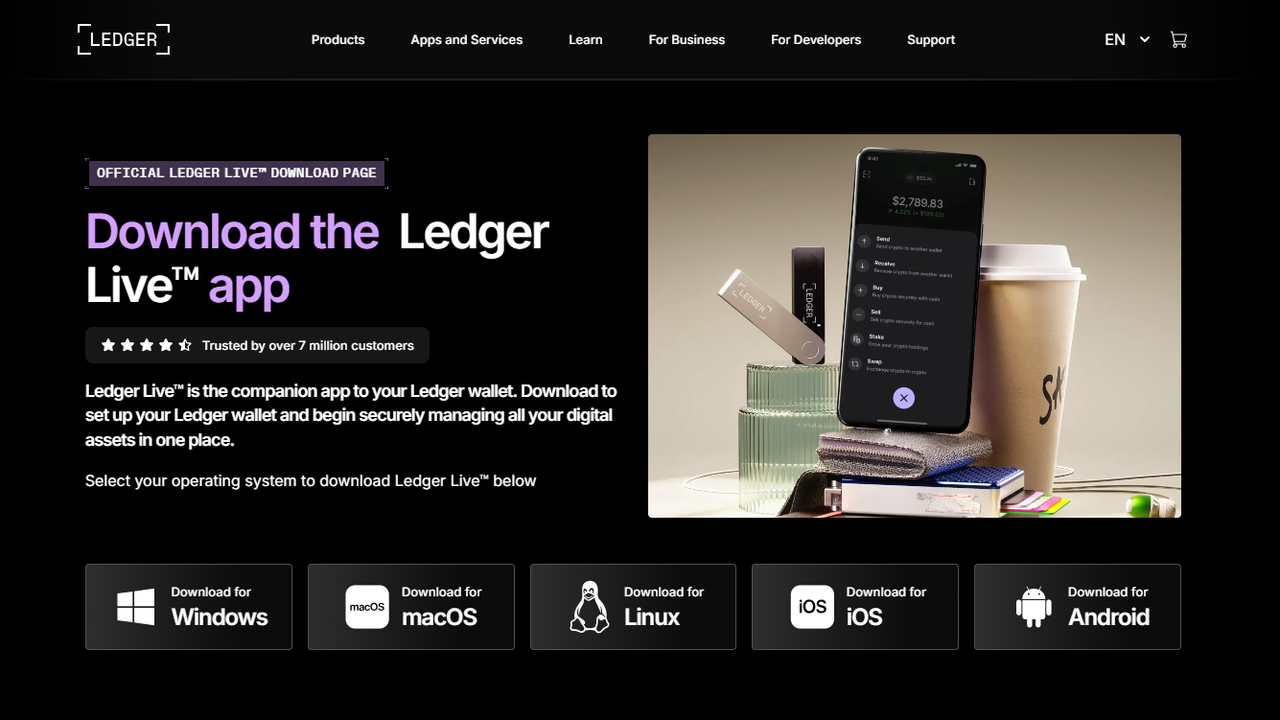Overview — Ledger® Wallet Developer Portal®
Ledger® Wallet – Getting Started™ Developer Portal® introduces developers to tools and APIs that enable applications to interact safely with Ledger devices. Whether you’re developing a DApp, DeFi tool, or Web3 wallet interface, Ledger provides robust SDKs and integration libraries designed for hardware-level security.
Visit the official developer resource at Ledger Developer Portal for documentation, guides, and community resources.
Core Concepts — Ledger® Wallet – Getting Started™ Developer Portal®
Ledger® Wallet – Getting Started™ Developer Portal® focuses on providing essential concepts for building applications that leverage Ledger’s security model. Developers learn how to:
- Interact with Ledger Nano devices securely through WebUSB and HID protocols.
- Manage transaction signing within decentralized applications.
- Use
@ledgerhq/hw-transportand@ledgerhq/hw-app-ethlibraries for blockchain communication. - Integrate Ledger support into existing wallets or DeFi platforms.
Setup — Ledger® Wallet Developer Environment
Before building your project using Ledger® Wallet – Getting Started™ Developer Portal®, ensure you have the right development environment configured:
- Install Node.js (version 16+ recommended).
- Set up a project directory and initialize it with
npm init. - Install Ledger’s core SDKs:
npm install @ledgerhq/hw-transport-webusb @ledgerhq/hw-app-eth. - Connect a Ledger Nano device and unlock it with the appropriate app (e.g., Ethereum app).
- Use sample scripts from the LedgerHQ GitHub repositories to test device connectivity.
Key SDKs and Tools — Ledger® Wallet Developer Portal®
Ledger® Wallet – Getting Started™ Developer Portal® provides official SDKs that simplify communication with Ledger devices:
@ledgerhq/hw-transport— abstract layer for USB/HID/BLE connections.@ledgerhq/hw-app-btc— for Bitcoin-based apps and signing workflows.@ledgerhq/hw-app-eth— handles Ethereum and ERC-20 token interactions.@ledgerhq/hw-transport-webusb— allows browser-based Ledger connections.
These SDKs form the foundation of most Ledger integrations. You can review detailed examples at Ledger Developer Docs.
Security Model — Ledger® Wallet Integration Principles
Ledger® Wallet – Getting Started™ Developer Portal® emphasizes a “security by design” philosophy. Private keys never leave the secure element of the device. Applications communicate with Ledger hardware only through signed and verified channels. This approach protects against malware, phishing, and compromised endpoints.
Developers should follow Ledger’s guidelines on message signing, user confirmation flows, and isolation of critical operations.
Building Your First App — Ledger® Wallet Developer Portal®
Here’s a simplified example of connecting and reading an Ethereum address using Ledger® Wallet – Getting Started™ Developer Portal® SDKs:
// Example: connect to Ledger and get Ethereum address
import TransportWebUSB from "@ledgerhq/hw-transport-webusb";
import Eth from "@ledgerhq/hw-app-eth";
async function getAddress() {
const transport = await TransportWebUSB.create();
const eth = new Eth(transport);
const { address } = await eth.getAddress("44'/60'/0'/0/0");
console.log("Ledger ETH Address:", address);
}
getAddress();
This minimal script showcases how simple it is to start integrating Ledger device access into your web applications.
Testing and Debugging — Ledger® Wallet Developer Portal®
Ledger® Wallet – Getting Started™ Developer Portal® also provides test suites and simulation tools to debug integrations. The Ledger Speculos emulator can simulate device behavior, enabling developers to test their applications even without physical hardware.
To get started with Speculos, visit Speculos on GitHub.
Deployment and Maintenance — Ledger® Wallet Integration
Once your integration works correctly, follow these steps to ensure long-term stability:
- Implement regular SDK updates to match Ledger firmware improvements.
- Test integration after every Ledger Live update.
- Handle disconnection gracefully; always verify device presence before transactions.
- Encourage users to install Ledger Live from the official Ledger.com/Start to manage firmware updates.
Support and Community — Ledger® Wallet Developer Portal®
Developers working through Ledger® Wallet – Getting Started™ Developer Portal® can seek assistance from Ledger’s community channels, including the official Developer Hub, the Ledger Discord, and the Ledger GitHub repositories.
Ledger maintains open communication with Web3 builders through regular updates, changelogs, and API improvements.
